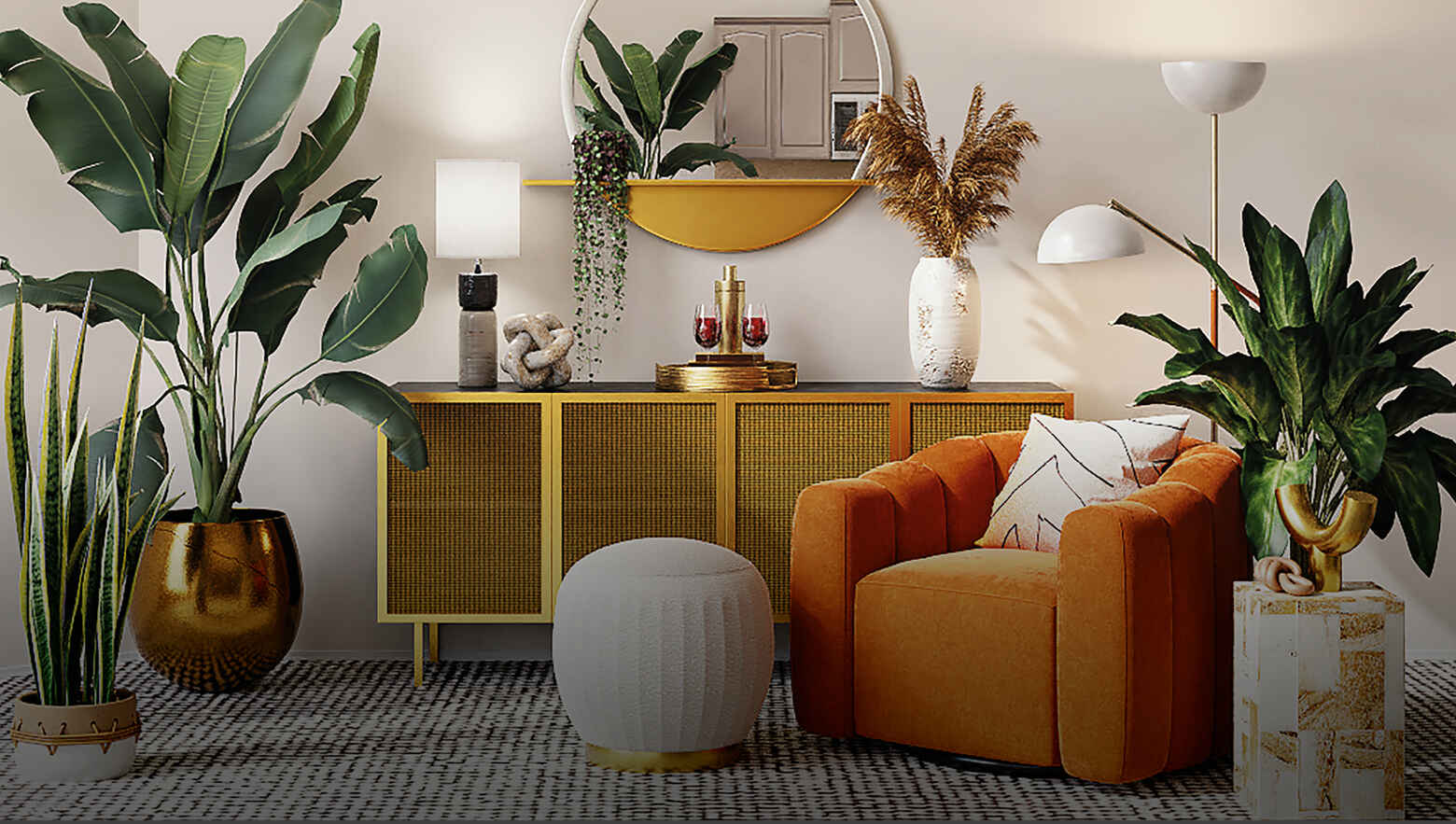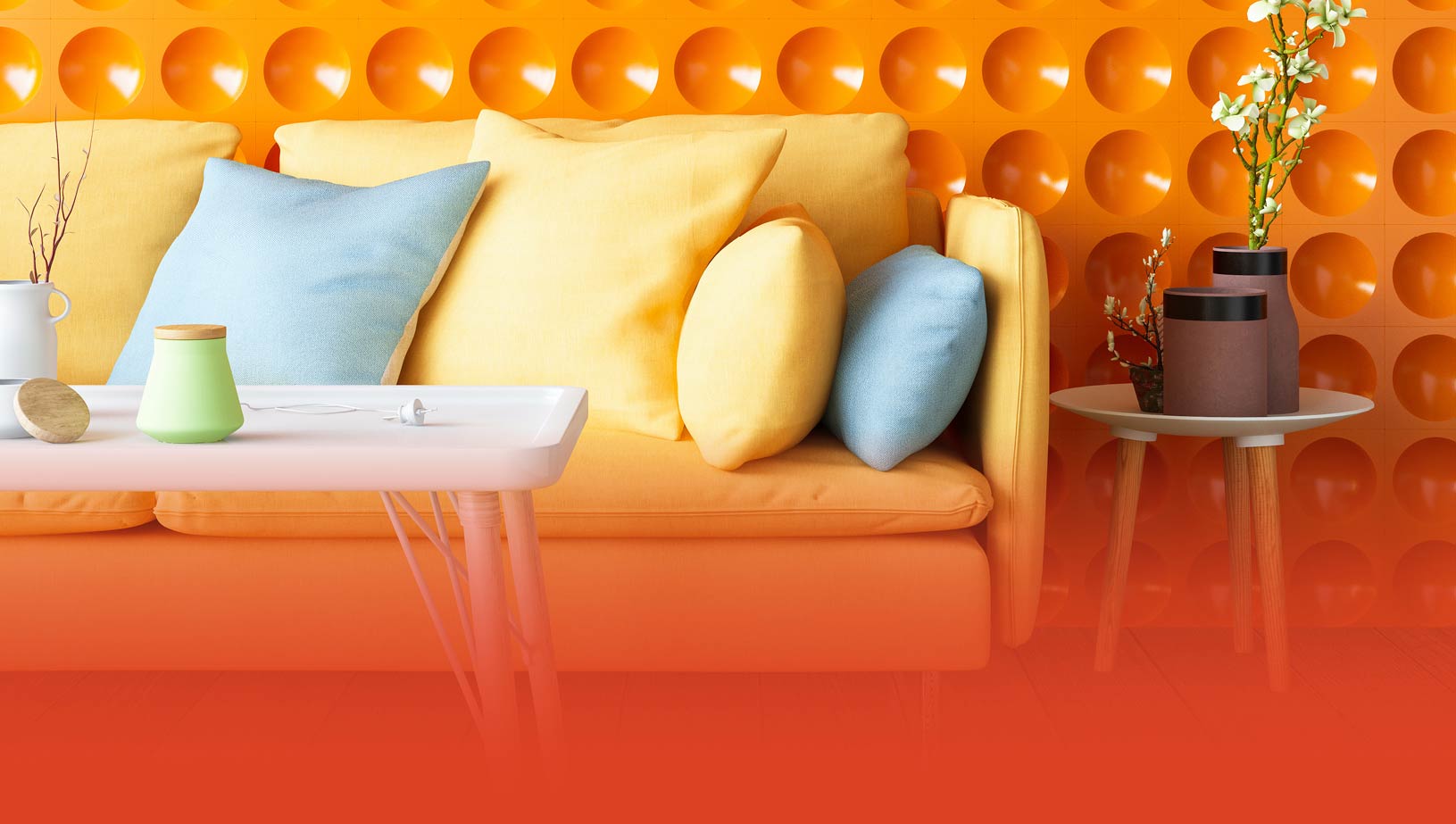A child’s bedroom plays an important part in their early life. It's a comfort zone and place for them to let imaginations run wild. Beyond how it looks, it can also teach them a lot about themselves. We can even learn something about ourselves from them too.
We wanted to find out exactly how parents feel about decorating their little one’s room and what’s most important to them. In order to do that, we reached out to our PartyLite community and parents all over the world to ask them a few questions about their interior design choices when it comes to their children. We hope you can gain inspiration from other parents out there to make your child’s space their very own.
A space for identity, growth and development
The act of giving a child a bedroom makeover is a popular rite of passage for many. It represents personal growth, is a reflection of identity and marks a milestone in their lives.
Research tells us that involving children in the process of decorating their room is more important to them than, “watching their first football match, riding a bike” or even their first day of school. Other studies have also found that it can help to boost productivity - with 92% of children stating that they would spend more time in their room playing, or even doing homework, if they were involved in the decoration process.
With that research suggesting that the world of children’s interior design goes way beyond aesthetics, let’s take a look at our survey results to get a better idea of what it means to us.

What did we find out?

Nearly a third of people said that the most important aspect of decorating their child’s room is that it reflects their personality
This shouldn't be surprising, as it's something adults do too. Many parents may decorate their child's bedroom before they are even born, but this shows that as their personality grows, so does their bedroom décor."
After reflecting their personality (29%), functionality came in second (18%) and style in third (16%).

Only 26% of parents are influenced by traditionally gendered colours, like pink and blue, when decorating their child’s room
Colours play a huge role in interior design. They’ve been proven to influence our emotions, leading to whole rooms being painted in specific hues as a way to invoke certain moods. But before we knew anything about colour psychology, we had long assigned certain colours to gender instead.
In many parts of the world, pink and blue are commonly the two shades of choice for generic children's toys, clothing and furniture. Blue for boys, and pink for girls. Even today these colours are symbolically used in gender reveal parties. However, historically it's not always been the case - Victorians considered pink a masculine colour for baby boys, where girls often wore blue. According to our survey, 26% of people are still influenced by traditionally gendered colours when decorating their children's rooms.
While this is just over a quarter of responses, if we look on the other hand, 46% of people disagreed. This suggests a move away from traditionally gendered colours and their conventions.
Given that the most important aspect of decorating a child’s bedroom is that it reflects their personality, it seems natural that parents don’t want to be limited to pink and blue when expressing their child’s interests. Letting children form their own identity means being conscious of gendered interior design choices that may influence their personal development.

69% of parents choose inspiration from their children's interests, instead of global trends
Now let’s look at the why behind children’s home décor. We asked parents where they get inspiration when decorating, and 69% told us that their inspiration comes from their children. Their children’s interests more specifically.
And of course this ties in with everything we’ve found out so far. If the majority of parents want to reflect their child’s personality in their room, taking cues from their hobbies and likes will be a good place to achieve that.
Filling their room with things that are familiar to them helps to build a sense of connection, allowing children to feel more comfortable in their space. And that comfort is vital in their younger years for encouraging personal growth.
After their child’s interest, the next most popular sources of design inspiration were Pinterest (50%), Instagram (43%), magazines (25%) and showrooms (25%). From this we learn that most parents get their inspiration from their child, instead of external influences like social media and showrooms.

The most popular feature that parents will let their child choose for themselves is accessories
So far we’ve uncovered that a child’s bedroom representing their interests and aligning with their personality is most important to parents. But how many parents actually give their child a say in their room? That’s why we asked our survey respondents which part of the room they’re willing to let their child choose for themselves.
Accessories took the top spot with 62%, theme and colours came in joint second at 58% and soft furnishings fell in third at 38%. The results aren’t too surprising, showing that parents allow for freedom of choice when it comes to smaller items. It gives children a chance to have an input on things that are more for stylistic purposes rather than functionality.

76% of parents feel that it’s important to let their child be involved in the decoration of their room
When we asked parents how important it is to let their child have a say or be involved in the decoration of their room, 76% of our survey respondents confirmed that it was important, with only 10% confessing that it’s not.
Giving a child the opportunity to have creative expression over their bedroom appears to have beneficial effects on behaviour, as shown in a study of 2,000 parents who stated that their child felt a sense of ownership of their room if they had helped to decorate it. They even went on to suggest that it helped their children to keep their rooms tidier, as they wanted to show it off to their friends.
So while making a child feel involved in the decoration of their room may not seem significant, it can be a vital building block in teaching them responsibility.
Animal characters are a prominent figure throughout childhood, populating beloved children’s books, TV shows, films and toys. It’s no wonder then that of the 41% of children whose bedroom has a theme, the most popular theme is animals.
Next is unicorns, followed by a princess theme and Marvel’s Avengers in joint third.

45% of parents are unlikely to purchase second hand or thrifted furniture for their child’s room
Let’s talk about the furniture itself. We wanted to know exactly how parents feel about second-hand furniture for their children, and we were shocked to see that 45% were unlikely to purchase pre-owned items for their child’s room compared to 30% who stated they would be likely to.
With nearly half of parents opting to buy new furniture, it poses the question of why as second-hand pieces are usually more affordable.
Well, brand new pieces will more often than not be in better condition. Parents can also choose exactly what type of item they want, whereas thrifted pieces are limited to what’s currently available. There may also be concerns over hygiene when shopping second hand. Especially given the pandemic, cleanliness is more important than ever.
We also asked parents whether it was important to them to shop from independent retailers and brands. The majority of 62% voted no, it's not important to them, against 38% who voted yes.

54% of parents prefer to give away their child’s unwanted furniture to family or friends, despite their own preferences for shopping new items
We know where parents look for inspiration, where they prefer to shop and how. So let’s take a look at what happens when their child has outgrown their current bedroom. We asked our survey respondents how they would dispose of unwanted or old furniture, and 54% of parents said they would prefer to give it away to family and friends. This is over donating it, 45%, selling it, 38%, and recycling it, 12%.
Giving furniture away is a convenient method of getting rid of something you no longer want, while also helping someone else. It benefits everyone and gives furniture a new lease of life rather than just being thrown away or kept in storage.
It’s interesting, however, that this was the top choice when nearly half of parents prefer to shop new over second-hand. We can only assume that while parents want the luxury of brand new items for their own child, they’re still happy to support sustainable practices to extend the life of these products.
Summary of Findings
- 29% of parents said it was most important to them that their child’s room reflects their personality
- One quarter of parents are influenced by traditionally gendered colours when decorating their child’s room
- Parents get the most inspiration from their child’s interests
- Accessories are the most popular feature that parents will let their child choose for themself
- 76% of parents said that it was important that their child has a say or is able to help decorate their room
- 41% of children’s rooms are decorated with a theme
- The most popular child’s bedroom theme is animals
- 45% of parents are unlikely to purchase second-hand furniture for their child’s bedroom
- 62% of parents said that shopping from independent brands isn’t important to them
- The most popular method of disposing of old furniture is to give it away to friends and family
A child’s bedroom, like any room in your home, is a space to feel welcomed and comforted. View our complete Summer 21 collection here for fragrances to enliven and décor to elevate your space.













